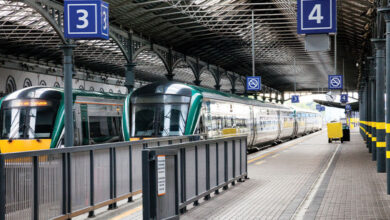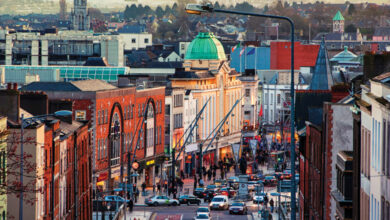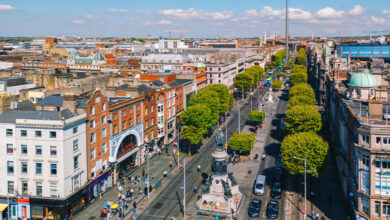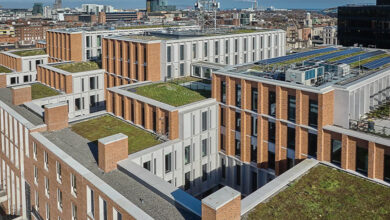Irish Cities in Crisis
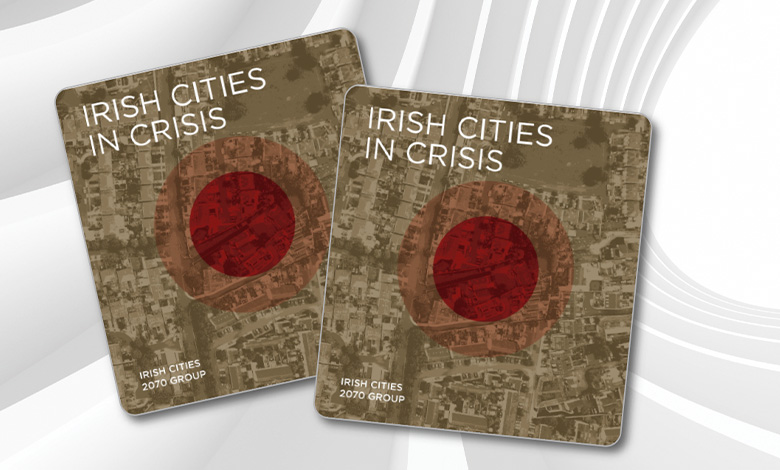
Irish Cities in Crisis is a call to arms. The essays in this book describe the changes needed across government, particularly regional and local government reforms, and the transformations required in town planning and urban design, write authors David Browne and Jim Coady.
We the authors are issuing a call for unanimous active engagement in reaching a consensus on development solutions through both top-down and bottom-up approaches. It is crucial that the common good, anchored by sound planning principles, succeeds over individual or corporate agendas.
Irish Cities in Crisis sets out a clear vision for the compact and sustainable growth of Irish towns and cities over the coming 50 years. Resourcing and implementation of that vision must start now.
Recognise the crisis
The contribution of cities to our way of life and economy is poorly understood. We have a successful economy and a burgeoning population but, unless we change how we design our cities, Ireland will not be the very attractive place it should be in which to live, work and invest. There is a crisis. Our planning and development systems cannot provide the well-designed living and working environment needed for the future, and we cannot continue with land-hungry, low-density urban expansion.
Change will not be easy. Courage and great leadership are needed from all levels of government to develop across Irish society a vision of how Irish cities must transform to meet the challenges of population growth and climate change, and then implement the changes needed.
Potential population growth, consequences, and opportunities
Our population could grow from 7.2 million to 11 million by 2070. For decades we have underestimated population growth and set targets for infrastructure, housing, and development that were too low. Our ports, airports, transport networks, piped and wired infrastructure, public services, and housing must get ahead of the already ‘baked-in’ population growth.
What has gone wrong?
Too little autonomy is devolved to regional and local authorities. There are too few planning and urban design staff across all levels of governance, particularly in local authorities, to properly design our urban areas, and the reaping of windfall profits from rezoning or intensification of permissions bedevils implementation of projects.
Our planning system facilitates low-density suburban expansion, with little creation of ‘place’, the streets, squares and green spaces that underpin public life and wellbeing. Competition between cities and counties is also detrimental to proper planning as it frequently draws development into the countryside which should be in towns and cities.
Recognise the contrast with European cities
Successful European cities have much greater autonomy and resources devoted to urban design and project development than we do. They collect up to 40 per cent of their capital through local taxes and the uplift in land values from rezoning accrues primarily to the public purse. They design and manage urban development: top-down and bottom-up planning is the norm: the common good is their touchstone: infrastructure and public services are provided before building development commences in new areas: compact neighbourhoods are the ‘building blocks’ of their cities; and they install high-frequency public transport linked to ‘active travel’ as they adapt to a carbon-free future.
“Without healthy cities, Ireland will not retain and continue to attract domestic and foreign investment.”
Respond to climate change and destruction of the planet
All our cities occupy coastal estuaries and are increasingly vulnerable to flooding as weather events intensify and seas rise, integrated planning and investment are needed to avoid catastrophe.
Cities must decarbonise, conserve land, protect the natural world, and enhance biodiversity as they respond to population growth and diminishing household size. We must densify new and existing suburbs and plan the net zero places in which to live and work, with green infrastructure linking residents to the natural world and public transport systems offering frequent services.
Training and research for a plan-led future
There are too few town planners and urban designers in our regional and local authorities. Training in these and other urban management disciplines must be widened to guide a plan-led future.
Good governance and urban design needs co-ordinated research focussed on near-term issues and long term national goals. A publicly funded body should co-ordinate this work.
Planning compact, healthy, sustainable and resilient urban growth
Transformative city planning and urban design can be delivered by:
- dismantling the silo cultures in local, regional, and national government and facilitating collaboration;
- resourcing regional and local authorities to enable them envision, design and manage their regions, cities and towns effectively;
- equipping planners and urban designers with the leadership to guide the densification of existing suburbs, design the new ones, and facilitate bottom-up and top-down planning;
- ensuring future city plans include 3D models and digital twins, and express the design parameters of future neighbourhoods, easing planning approval for compliant developers;
- strengthening the form of our cities with urban growth boundaries, designed urban development zones, small blocks, streets, active streetscapes and a pedestrian friendly public realm; and
- developing the public and active transport networks, and demanding high quality architectural design.
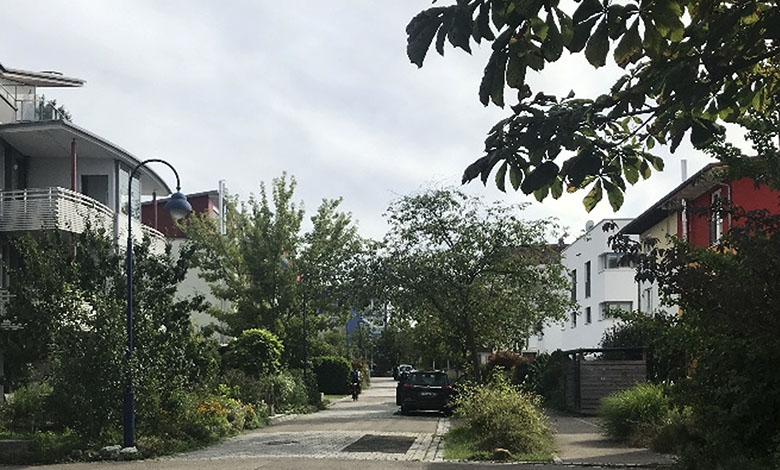
IC70 Galway City Study
Galway is growing fast, with a dynamic economy and manufacturing sector, 25,000 third-level students, a significant cultural scene and a thriving tourism industry. For visitors, it is also the gateway to the west of Ireland. It is surrounded by an exceptional landscape and has a strong city centre, but its suburbs display sprawl and car dependence and lack a sense of place. Given its size and the ubiquity of its problems, it is ideal for demonstrating the principles IC70 promote – finding the genius loci of the place, developing a vibrant centre, creating richly textured districts and neighbourhoods by densifying suburbs, connecting green infrastructure elements together, and creating a city of ‘short distances’ based on active movement – pedestrian, cycle, and public transport – rather than the car.
The IC70 study demonstrated how Galway, and all Irish cities and towns, may be enabled to grow successfully. How we must embrace their role as the engines of our society and economy and resolve the false urban/rural divide that often impedes good policymaking. We have been profligate in the use of land. Urban creep must be stopped and existing suburbs infilled to sustainable densities. There is hardly a town or city whose development envelope actually needs substantial expansion while accommodating anticipated growth over the next 50 years if we adopt sustainable, compact urban growth.
The Galway study also demonstrated how our mono-use suburbs must be transformed into mixed use neighbourhoods, with all the facilities needed for successful living and working close to our homes, with beautiful open spaces, playgrounds and parks, and connections to a city-wide green infrastructure than links residents to the natural world.
Shift in mindset
Radical change is needed in how we view our cities, and how they will be financed, governed, and planned. Cities must be recognised as the engines of our social, economic, and cultural lives. Without healthy cities, Ireland will not retain and continue to attract domestic and foreign investment. Great cities and towns are our future.
Such change demands collaboration between national, regional and local governance, civil society, and private sector actors. It also needs considerable investment in planning for our future and the construction of infrastructure and public buildings to deliver effective public services in support of communities.
There is much to do, and we hope Irish Cities in Crisis helps chart the way.
Irish Cities in Crisis is available in bookshops and from the RIAI.

